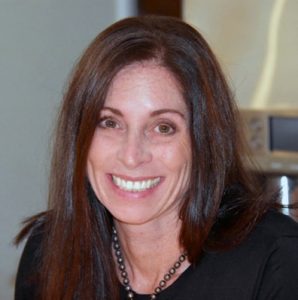Across the globe, the coronavirus has impacted nearly every aspect of daily life. As we continue to navigate and define new challenges, the impacts on K-12 education remain at the forefront of consideration and conversation among school leaders, educators and families alike.
In spring, school districts began mobilizing to transform the landscape of learning and continue instruction virtually, via emergency remote teaching. But for rural communities, such as Levy County, Florida, where 92 percent of the county live in rural settings, the transition to virtual was not so seamless.
For more than 10 years, Maria Coady, professor of English for Speakers of Other Languages (ESOL) and bilingual education, has served rural communities and worked closely with the Levy County School Board as part of Project STELLAR, a grant-funded initiative that supports English language learners (ELLs) and their families in rural settings across the country.
Central to her research is exploration into the relationship between land and space for bilingual and multilingual communities, an interest kindled when she arrived at the University of Florida in 2003.
“Place matters in who we are as people and the way schools and people in communities function,” she said.

Maria Coady
Beyond preparing teacher leaders to serve these communities, Coady has worked to rebuild Florida as a national leader in bilingual education by establishing the nation’s first statewide repository of bilingual education programs and revitalizing the Florida Association of Bilingual Education (FABE) in 2018.
She has been recognized for her unmatched commitment to serving marginalized communities garnering the American Educational Research Association (AERA) 2020 Exemplary Contributions to Practice-Engaged Research Award.
“I‘m just deeply honored and humbled by AERA,” she said. “… I feel like it’s always trying to affirm the work of scholars, and the fact that they actually have this award to recognize the kind of work that takes place often in invisible spaces but that’s valued by communities … that’s very powerful.”
The impacts of the coronavirus on rural communities
While those who reside in rural settings are no strangers to unique daily challenges, Coady shared the introduction of the coronavirus has only further exacerbated these adversities and disparities.
“There are inequities that are inherent in education in the United States,” Coady said. “… But even more so in coronavirus, when we’re talking about physical distances — actual space between educators and children and where they live and students — then that also becomes another inherent inequity.”
As rural communities exist often at a distance from urban and suburban areas, access to stable Wi-Fi or internet connection at all is not guaranteed. Further, some families do not have the means to own personal computers or laptops for children to participate in online courses.
Beyond limited digital connectivity, the impact on education for students in rural communities has magnified due to factors such as communication, health and harvest season.
As all students in Levy County are on free lunch, with many also receiving food assistance for their families, establishing new methods of access to these services was imperative once emergency remote teaching began.
Additionally, without the typical channels of communication linking schools and families, consistency in contact became increasingly difficult, particularly for ELL students who often serve as the conduit for communication for their families.
“We have things like distance, healthcare, access to digital connectivity, supplies, materials and resources, and then we have language and cultural barriers,” Coady said. “These are tremendous.”
As physical distance is a clear barrier for rural communities already, access to healthcare providers and local hospitals became a heightened concern.
“That’s a real barrier to people being able to survive and address some of the health care challenges that they have in their immediate environment,” Coady said.
Moreover, a high percentage of Levy County’s rural residents serve in the agricultural industry, some of which are undocumented. As the pandemic aligned with the blueberry harvest season in the spring, many had to continue to work during this time, often bringing their children to assist in picking blueberries.
“Undocumented workers that contribute to the functioning of the country and certainly to the food supply chain in the United States — they are the essential workers and they’re the people that really need additional support but don’t access that support because of their immigration status,” Coady said.






